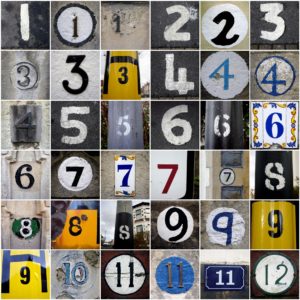 Register your hive(s) as required by state law RCW15.60 – it’s easy to do and the (nominal) registration fee goes to further honey bee research in Washington State. Download the 2016 form and send it in, or if you’ve registered before you’ll likely receive a renewal form in the mail. Even if you register past the deadline, the late fee is minimal, just register – today!
Register your hive(s) as required by state law RCW15.60 – it’s easy to do and the (nominal) registration fee goes to further honey bee research in Washington State. Download the 2016 form and send it in, or if you’ve registered before you’ll likely receive a renewal form in the mail. Even if you register past the deadline, the late fee is minimal, just register – today!
Once you have that important task done… a new beekeeper needs to have many decisions made, and soon. Luckily PSBA is here to help you make those decisions. Our upcoming classes or apiary work parties are great ways to learn.
One important decision is the location for the hives. For guidance on choosing a site for your hive(s) its always important to first adhere to the laws for your area. Refer to PSBA’s resource page for some local area beekeeping laws. Once you’ve satisfied these requirements you can continue researching criteria for selecting the best positioning of the hive at the chosen location and what style of beekeeping you will pursue.
Pick a hive style and hive equipment that meets your goals (you do have goals, right? if you don’t, back up and start there!)
- Langstroth or top bar style hives? Consider whether your goal is to harvest a lot of honey or not, and whether you can lift heavy boxes or not. These are some top considerations which could drive your decision on style of hive.
- Woodenware: If you choose a Langstroth hive type, you will need to decide on the size of boxes you’ll use (and are able to lift). Deeps, Mediums, Shallows are commonly available.
- Frames or just top bars? Wooden or Plastic frames? Even though you may choose Langstroth hives, doesn’t mean you couldn’t go with top bars instead of traditional frames. Again, review your goals and choose accordingly. Keep in mind, wooden frames are repairable and can have new foundation inserted, plastic frames do not offer this possibility.
- Will you use foundation? if so – wax or plastic? and foundation cell size? Being able to converse on the possible merits of each of these is a goal unto itself! Do your homework and ask an experienced beek if you aren’t sure (PSBA’s neighborhood captains are great for this!)
- Screened or solid bottom board? There’s mixed reports on whether screened bottom boards are actually helpful in controlling varroa – do your homework and do what makes sense to you.
- Will you paint the woodenware and what color? Painting or sealing the wood in some way prolongs the life of your woodenware – which is one of the more expensive elements of beekeeping. Using darker paint colors helps with heat absorption in our cool climate.
- Style of outer cover – telescoping or migratory? Plan on moving your hives around en masse? maybe migratory lids are best for your style of beekeeping.
- February’s mild weather allowed you to check food stores in hives. Take advantage of a 55+ temperature March day to again check stores. Four frames of sealed honey would be ideal. If less than that it is recommended to feed sugar in some form. If you are already feeding with sugar continue to do so. Feeding sugar will stimulate brood rearing when no natural honey or pollen is available. It is probably still too early to feed 1:1 syrup so stick to dry sugar or fondant as long as night time temps are consistently below 50 degrees.
- You may have seen or will soon see bees taking cleansing flights on days with temps above 55. Some bees are entering the hive with pollen showing in the pollen sacs. Pollen and bee bread made from pollen are key parts of the diet of larval and young adult bees and their population continues to build as the queen’s egg laying increases. It is important to ensure that the bees have sufficient food.
- Prep/Repair Equipment: For the second year beekeeper and beyond, woodenware maintenance is a consideration. Woodenware is painted to preserve the wood from the elements. Bees will manage just fine in unpainted hive bodies or in hives with a fading paint finish, however. Scraping propolis and wax is a bit futile as the bees will apply it again. Consider rotating out of your operation any brood comb that is old, dark, or distorted – or perhaps has been invaded by wax moth over the winter. A system of marking each frame with the date when it is put into use is helpful in rotating frames out.
- Continue to clean the bottom board of dead bees. If your inspection reveals a dead hive it is not too late to order nucs or packages. At pugetsoundbeekeepers.org the section “Resources” has links to vendors for supplies, bees, and hive equipment – consider ordering from one of our sponsoring vendors (who donate bees to PSBA).
- To assist in the analysis of cause of death, “The Beekeeper’s Handbook” by Sammataro and Avitabile has a thorough coverage of diseases of adult bees. WSU also offers a FREE diagnostic testing service.
- Prepare and position bait hives for the swarm season by early April. Ideas of how to do this can be found at http://www.honeybeesuite.com/2011/03. If keeping mason bees, mid-March is a good time to set tubes out in their outdoor location so that mason bees can emerge when the time is right.